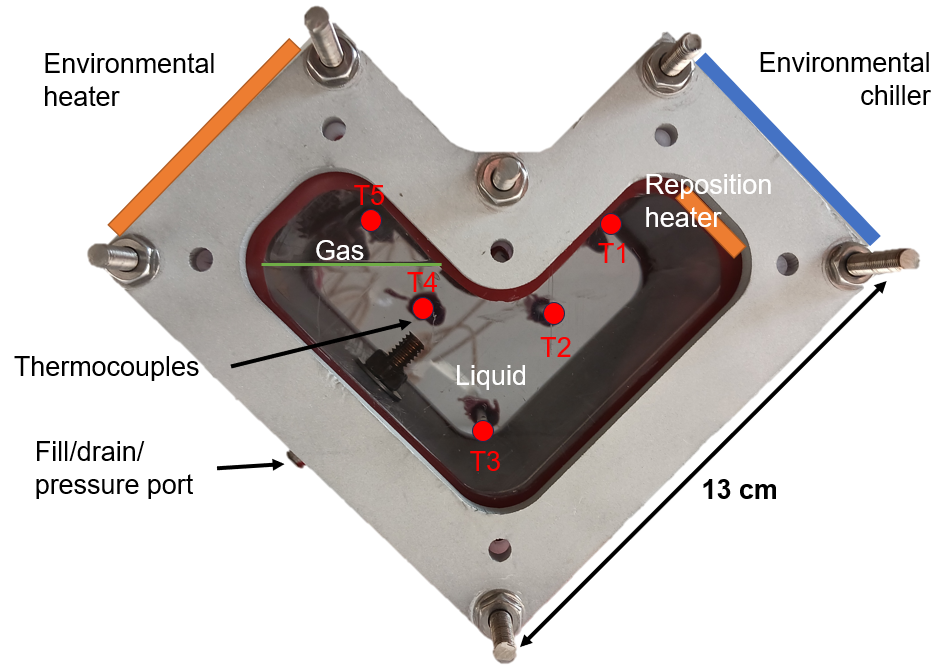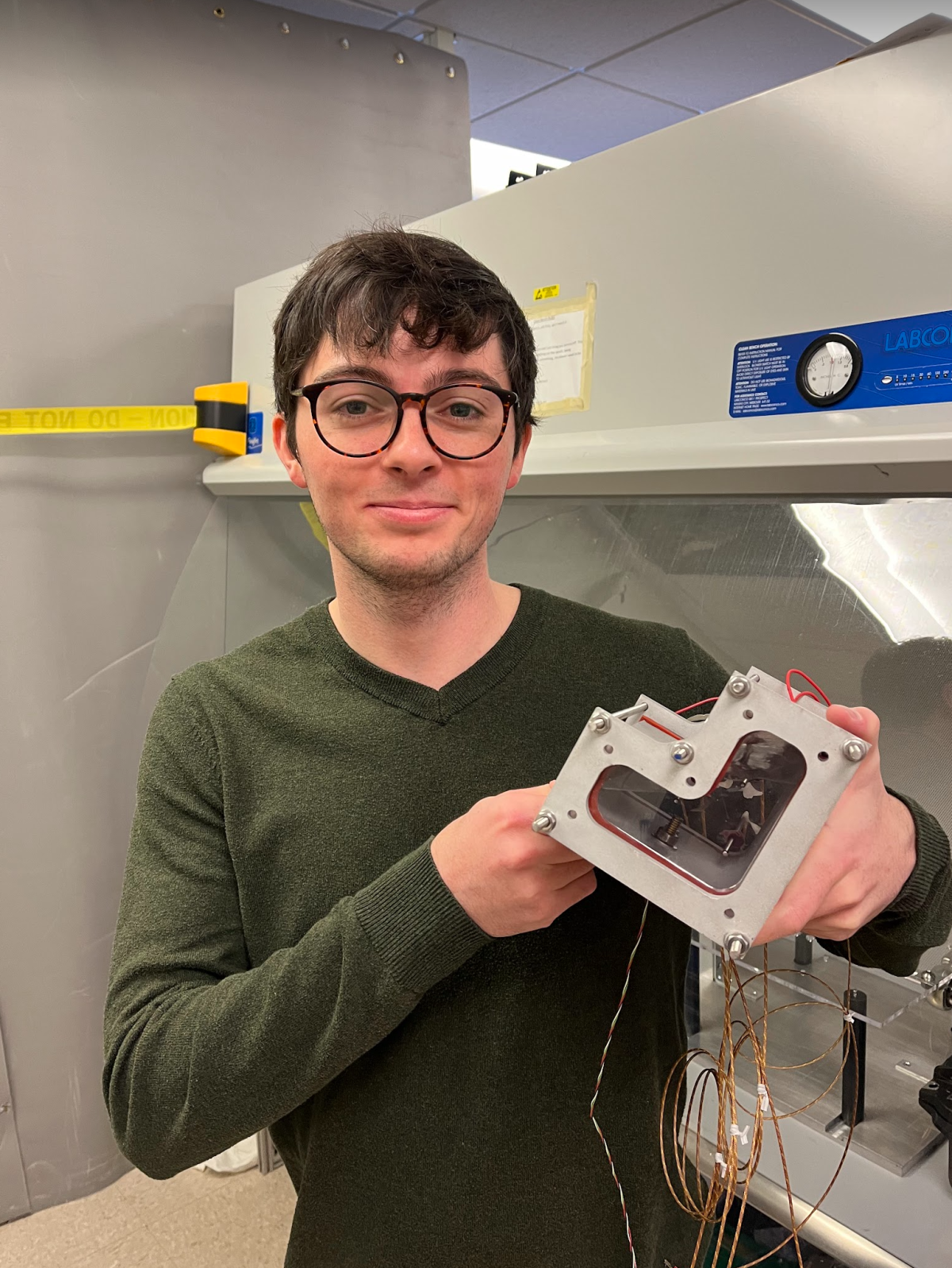Sam Hart presented his research on innovative CubeSat propellant management.
CubeSats offer scientists more affordable access to space and have exponentially improved space exploration. Researchers in the Daniel Guggenheim School of Aerospace Engineering are testing the best propellant systems for CubeSats to improve current technology.
Ph.D. candidate Sam Hart presented his research at the 2024 AIAA SciTech Conference and earned the Best Small Satellite Student Paper Award with his paper, Leveraging Phase Change for CubeSat Propellant Positioning. The paper describes the preliminary hardware tests used to characterize the performance of a CubeSat size thermal phase change propellant management device (PMD).
“We are very proud of Sam. He is representing Georgia Tech in the best possible way at national conferences,” said Professor Glenn Lightsey

Sam Hart
The Heat Is On
Hart conducted a set of experiments under the direction of Professors Glenn Lightsey and Álvaro Romero-Calvo to better understand the performance of phase-change PMDs and find solutions to phase change challenges.
“When we use liquid fuels in space, we need some way of controlling where the liquid sits in the propellant tanks because, without gravity, it tends to float around and stick to any walls it can find,” Hart explained. “Making sure that we can pull either gas or liquid out of the tank requires big and heavy equipment that uses a lot of power, and some of them aren't terribly reliable.”
When the fuel tank is full of propellant, it will store it as a two-phase mixture with the refrigerant R-236fa, allowing some of it to store as a gas and some of it a liquid. Hart boiled the liquid in the tank using a simple patch heater that he installed. When the propellant boils, the bubbles form around the heater.
As the pressure in the tank rises, and the bubbles condense back into liquid, if left long enough, all of the gas will group around the heater. To pull the gas out of the tank, there is an outlet near the heater, and the gas leaves the tank through the outlet.
Hart started using angular tanks because CubeSats are angular. He designed a propellant management concept to handle this new shape of tank. In his tests, he built a heart shaped tank to try the concept out on. On Earth, this shape makes it so it is easy to have two separate bubbles in the tank, which allows him to collect data more easily. In space, his new method of propellant management will work on any shape of tank, including spherical ones.
One of the challenges with the PMD was testing the plastic windows. Hart had to be careful when selecting them because of the high pressure. With the pressure at 80-100 psi, they had to ensure there were no ruptures or breaks in the windows because it could cause an explosion in the lab.
“Sam's unique mastery of low-gravity fluid mechanics and small satellite engineering are leading to truly amazing contributions to the field of SmallSat propulsion. Congratulations, this award is a well-deserved recognition of his hard work and perseverance,” Romero-Calvo exclaimed.

Propellant Management Device (PMD)
Hart is also conducting hardware tests to prove that this concept works well, and they plan to move on to low-gravity testing campaigns later.
“Our system does have the promise to be a part of the next phase in propellant management in these propulsion systems. The PMD strategy used now is big and power-hungry, and it fails sometimes because it’s complicated,” Hart said. “Our plan is simple. It's just a heater with a magnet next to it, and magnets don't break very often.”
The Dallas, Texas native works on propellant management in the Low Gravity Science and Technology Lab in the Space Systems Design Lab. He became interested in aerospace because he liked fixing things. He thought he wanted to be an electrician or a plumber, but his family members in those trades told him that his life would be much easier if he designed things instead of fixing them by hand. In his lab work, he’s been able to do both.

Hart holding PMD